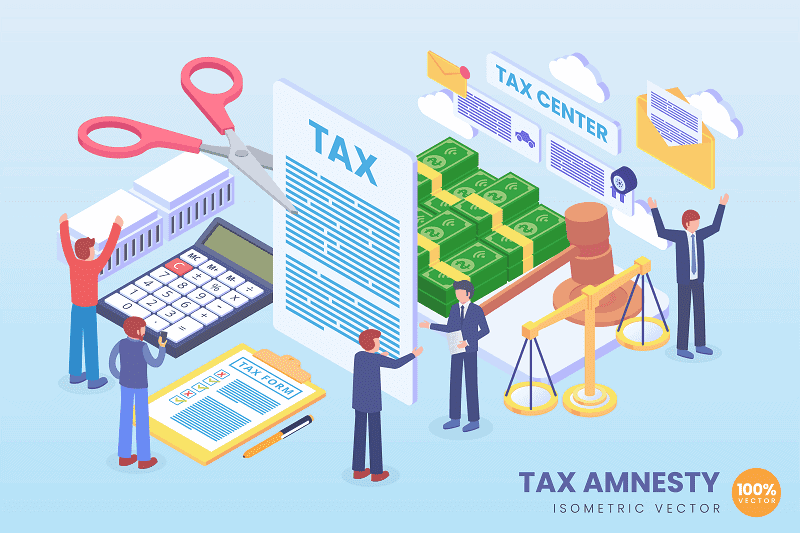All You Need To Know About Temporary Full Expensing
In an effort to address the economic consequences brought about by the coronavirus pandemic, the Australian Government introduced various economic stimulus measures. The goal was to help eligible businesses recover from the impacts of being in lockdown.
Beyond the cash incentives, the Australian Tax Office (ATO) introduced various tax incentives for businesses, including the Instant Asset Write-off Scheme, the Backing Business Investment (BBI) and the Temporary Full Expensing.
We have previously explained the benefits of maximising your small business’s tax deductions through the simplified small business depreciation rules such as the BBI and Instant Asset Write-off.
This article will cover the final piece of the puzzle – Temporary Full Expensing.
So, here’s an in-depth look at what you need to know.
What is Temporary Full Expensing of Depreciating Assets?

The Australian Government first announced the Instant Asset Write-Off Scheme in 2015 to allow small businesses to maximise their deductions by claiming depreciation for certain eligible assets as an immediate deduction instead of over a few years. However, business owners could only write off assets immediately if the total cost was less than the prescribed threshold amount.
However, in response to the effects of the global coronavirus pandemic, the ATO made the following changes to the instant asset write-off. From 12 March 2020 until 31 December 2020:
- The threshold amount for each depreciating asset had increased from $30,000 to $150,000 and
- The eligibility criteria had been expanded to cover businesses with an annual aggregated turnover of less than $500 million. This was increased from $50 million.
This means that business owners who first used or installed assets costing less than $150,000 between 12 March 2020 and 30 June 2021 could write off the entire value of the asset immediately.
While the world hoped that the pandemic would end sooner rather than later, the latter proved to be true, and the economic crisis continued to loom.
So, in the 2020 Federal Budget speech, the government unveiled a new version of the scheme, coined Temporary Full Expensing, which allows small business owners to deduct the full amount of any eligible depreciating asset first used or installed after 6 October 2020.
In other words, the threshold limit is now lifted, and the scheme extends to businesses with an aggregated turnover of less than $5 billion.
As part of the 2021-22 Federal Budget, the Temporary Full Expensing Scheme was extended for another year, which means that it extended to assets first used or installed for taxable purposes between 6 October and 30 June 2023.
Likewise, business owners could deduct the full cost of improvements to these assets or their existing eligible depreciating assets made during this period.
And unlike with the instant asset write-off incentive, a business owner could choose to ‘opt-out’ of Temporary Full Expensing for an income year on an asset-by-asset basis and claim a deduction using other depreciation rules.
Note: As of July 1, 2023, the temporary full expensing measure has officially concluded. This policy has been replaced with the instant asset write-off. The threshold for the instant asset write-off is now set at $20,000, marking a significant change for businesses in their tax planning and asset investment strategies.
What are the Criteria for Eligible Businesses?
Any business with an aggregated turnover of less than $5 billion is eligible to use temporary full expensing. However, an alternative income test applies for corporate tax entities with an aggregated turnover of more than $5 billion.
To qualify for the temporary full expensing incentive, the depreciating asset must be:
- new or second-hand*,
- first held by you at or after 7.30 pm AEDT on 6 October 2020,
- first used or installed ready for use by you for a taxable purpose (such as a business purpose) between 7.30 pm AEDT on 6 October 2020 and 30 June 2022.
*If it is a second-hand asset, your business can only utilise the incentive if its aggregated turnover is less than $50 million

If you don’t meet the criteria for the temporary full expensing incentive (because you acquired the asset before 6 October 2020), you may qualify for the instant asset write-off scheme if you acquired the asset between 2 April 2019 and 31 December 2020 and used or installed it for a taxable purpose between 12 March 2020 and 30 June 2021.
However, to qualify for the instant asset write-off, your business must have opted to use the simplified depreciation rules.
How Does The Temporary Full Expensing Scheme Interact with the Instant Asset Write-Off Scheme?
The temporary full expensing scheme is essentially a boosted version of the instant asset write-off scheme that applies to more businesses and a broader range of assets. However, when you acquired the asset as well as when it was first used or installed, will determine which incentive will apply.
For your convenience, here is a brief summary of how the two tax depreciation incentives interact:
| Business Type | Aggregated Turnover | Temporary Full Expensing | Instant Asset Write-Off |
| Small business using the simplified depreciation rules | Less than $10 million | Full write-off for assets (no cost restriction) first held from 6 October 2020 | Full write-off for assets that cost less than $150,000 and first used from 12 March 2020 |
| Small business not using the simplified depreciation rules | Less than $10 million | Full write-off for assets (no cost restriction) first held from 6 October 2020 | Only eligible if using simplified depreciation rules. |
| Medium business | Between $10 million and less than $50 million | Full write-off for assets (no cost restriction) first held from 6 October 2020 | Full write-off for assets that cost less than $150,000 and first used from 12 March 2020 |
| Medium to large business | Between $50 million and less than $500 million | Full write-off for assets (no cost restriction) first held from 6 October 2020 | Full write-off for assets that cost less than $150,000 and first used from 12 March 2020 |
| Large business | Between $500 million and less than $5 billion (Businesses that have an aggregated turnover more than $5 billion don’t qualify for these incentives) | Full write-off for assets (no cost restriction) first held from 6 October 2020 | Not eligible |
How Can Duo Tax Help?

Duo Tax is a team of quantity surveyors and registered tax agents who are experts at providing accurate depreciation reports for your building and equipment that will help reduce your annual taxes by maximising depreciation deductions.
Most first-time business owners aren’t aware that property depreciation is one of the largest tax deductions they can claim on their business assets.
So, our mission is to help reduce the tax burden by providing the most affordable, convenient and aggressive tax depreciation report service so that you can maximise the return on your business assets.
Our quantity surveyors are experts at simplifying the process of claiming depreciation and ensuring you’re taking full advantage by maximising deductions. We are committed to delivering exceptional results every time, with competitive pricing at the forefront of our values.
Key Takeaways
There are several depreciation methods available, and each has its own advantages and disadvantages. To work out which is right for your circumstances, speak to your tax professional today.
With the help of a depreciation expert on hand, you can get all of these questions answered so that you’re maximising your depreciation deductions.
To find out how much your business can save with the latest ATO tax incentives, get in touch with us today.

Ready to get started?
Talk to one of our friendly property experts to get a free quote or more Information.










